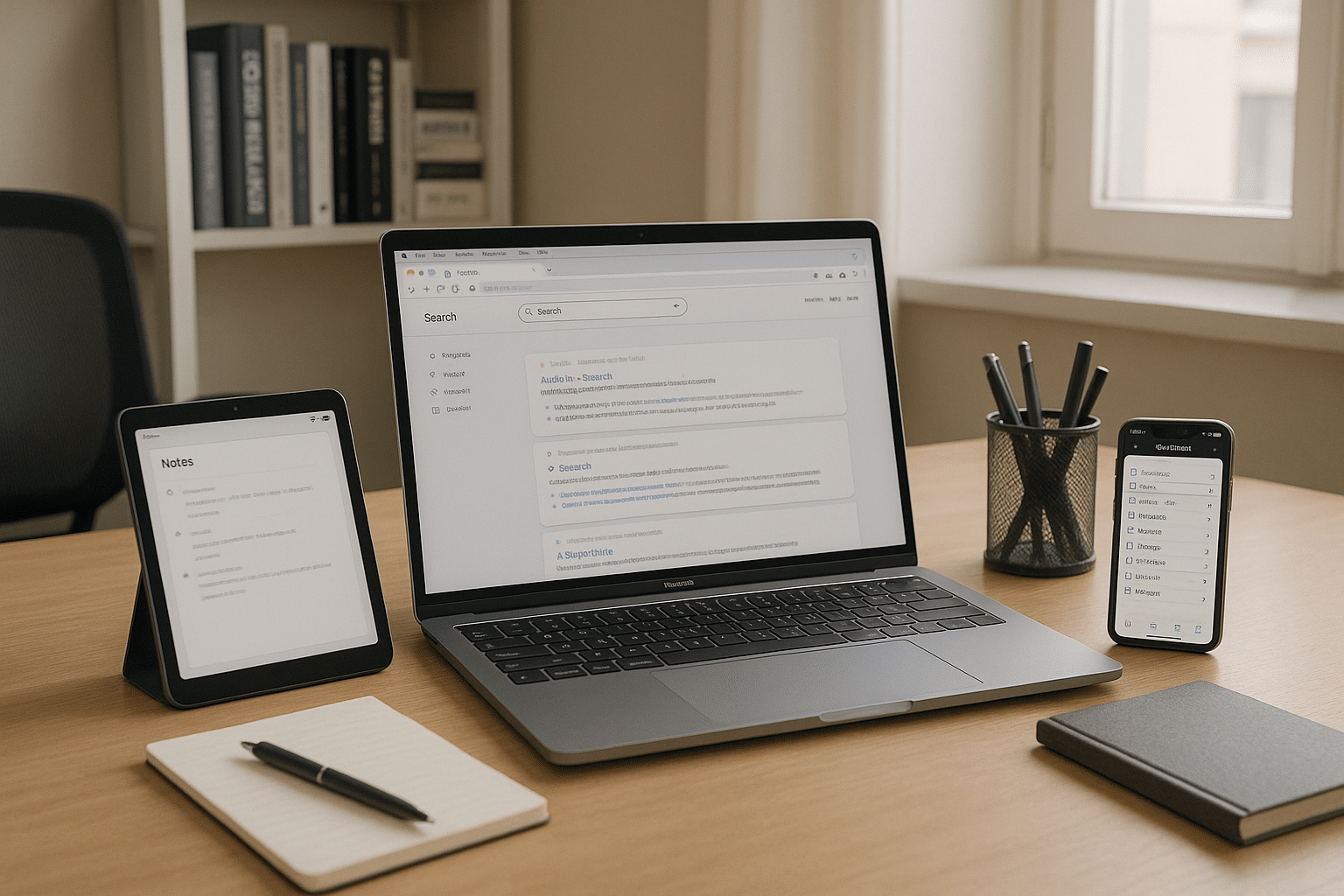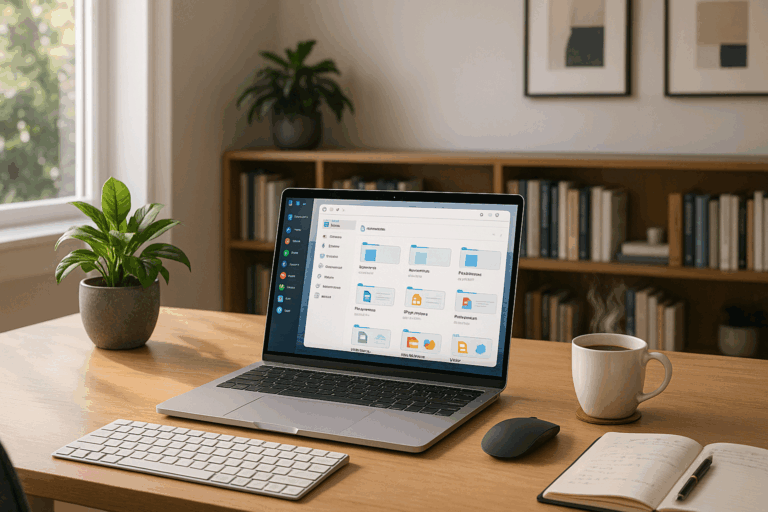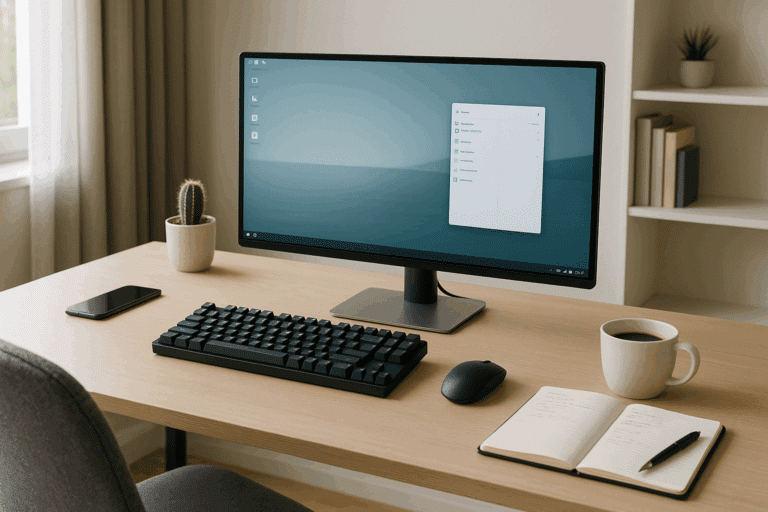In the digital realm, time is of the essence. Efficiency and effectiveness are key in harnessing the full power of online resources. As such, mastering the art of remote research and strategic bookmarking has become an essential skill for those who wish to thrive in today’s fast-paced, information-driven world. 😎
This blog post will delve into the ins and outs of remote research and bookmarking strategies. You will learn the whys and the hows, the dos and the don’ts, as well as tips and tricks to streamline your workflow and make your digital life easier. After reading this, you’ll be a bonafide remote research pro. 🔍📚
So, what’s in store?
First off, we’ll tackle the importance of remote research. In an age where almost all information can be found online, understanding how to efficiently find, analyze, and utilize this information is crucial. We’ll explore how remote research can boost productivity, improve decision-making, and enhance overall knowledge.
Next, we’ll break down the art of bookmarking. Though it may seem straightforward, effective bookmarking is more than just clicking the little star or heart icon on your browser. We’ll delve into different bookmarking techniques, their pros and cons, and how to choose the best one for your needs. 🌟
What’s next?
After that, we’ll focus on practical applications and real-world scenarios. Through detailed step-by-step guides, you’ll learn how to effectively conduct remote research and use bookmarking strategies in your daily work or studies. You’ll also discover how to manage, categorize, and prioritize your bookmarks for optimal usage. 📝
Finally, we’ll dive into the world of bookmarking tools and apps. In this section, you’ll get to know some of the best tools available for managing your bookmarks, along with their unique features and benefits. This will help you to decide which tool is the right fit for you and your remote research needs. 🛠️
This comprehensive guide is designed to equip you with the necessary skills and knowledge to master remote research and effective bookmarking strategies. Whether you’re a student, a professional, or simply a curious mind looking to optimize your online endeavors, this post will provide you with the tools to navigate the vast ocean of information at your fingertips. 🌐
So buckle up, and get ready to take a deep dive into the world of remote research and strategic bookmarking. Your digital life is about to get a whole lot more efficient! 😊🚀
The Definitive Introduction to Remote Research
Remote research, a strategy gaining momentum in the wake of the global digital transformation, allows businesses to gather qualitative data about user behavior, needs, and motivations, no matter where they are located. The beauty of this approach lies in its flexibility and wide-reaching capabilities. Instead of inviting participants to a specific location, businesses can now interact with users in their natural environments, yielding more genuine, authentic responses.
However, the challenge of remote research doesn’t lie in its execution but in the effective organization and analysis of gathered data. Here’s where the importance of bookmarking strategies comes in. These strategies assist researchers in efficiently structuring and categorizing data, streamlining the analysis process, and enabling them to derive meaningful insights more effectively.
But how exactly do you master these strategies? In this article, we will explore various bookmarking strategies for remote research, discussing their pros and cons, and how to implement them. If you’re eager to learn more about remote research, watch this comprehensive video: “Mastering Remote Research” by the UX Mastery community on YouTube.
Understanding the Importance of Bookmarking in Remote Research
Bookmarking plays a significant role in remote research, primarily because of the vast amount of data generated during the process. Without a robust system to categorize and organize this information, researchers can quickly become overwhelmed, leading to overlooked insights or erroneous conclusions.
A good bookmarking strategy acts as a roadmap, guiding researchers through the data, enabling easy retrieval of specific information, and simplifying the comparative analysis between different data sets. Moreover, bookmarking aids in identifying patterns, trends, and outliers in the data, enhancing the overall research outcome.
To fully comprehend the impact of bookmarking, consider the following comparative table:
| Research Approach | Without Bookmarking | With Bookmarking |
|---|---|---|
| Data Retrieval | Time-consuming and inefficient | Quick and efficient |
| Comparative Analysis | Difficult due to lack of organization | Simplified by structured data |
| Pattern Recognition | Challenging due to information overload | Improved with categorized data |
Effective Bookmarking Strategies for Remote Research
Having understood the importance of bookmarking in remote research, it’s time to delve into the strategies that can enhance your bookmarking efficiency. Remember, a strategy that works for one project may not necessarily work for another, so it’s essential to adapt based on your project’s unique requirements.
1. Categorization
Categorization involves grouping similar data under specific headings or tags, making it easier to locate specific information. This strategy is particularly effective for large-scale remote research projects where data is collected from diverse sources. Categorization can be based on various factors, such as user demographics, user behaviors, or data source.
2. Color-Coding
Color-coding is a visual bookmarking strategy that utilizes different colors to distinguish between various data types or categories. This strategy is highly effective for visual learners and can be combined with other strategies for maximum efficiency.
3. Prioritization
Prioritization involves arranging data based on its importance or relevance to the research objective. This strategy aids in quick retrieval of critical data, ensuring that key insights are not overlooked during the analysis process.
Choosing the Right Tools for Bookmarking
While effective bookmarking strategies are crucial for remote research success, the right tools can significantly enhance these strategies’ efficiency. Some popular tools for bookmarking include note-taking apps like Evernote or OneNote, collaborative platforms like Trello or Asana, and specialized research tools like NVivo or Atlas.ti.
When choosing a bookmarking tool, consider factors like ease of use, integration with other platforms, collaborative capabilities, and cost. If you’re unsure about which tool to choose, check out this video on YouTube: “Best Bookmarking Tools for Research” by the Tech Guru channel.
In conclusion, mastering remote research isn’t merely about conducting studies and gathering data. It involves strategically organizing that data for easy retrieval, comparison, and analysis. By implementing effective bookmarking strategies and utilizing the right tools, you can greatly enhance your remote research process and derive more meaningful, actionable insights.

Conclusion
In conclusion, it is evident that the intricate world of IT and engineering is filled with complex concepts that can seem overwhelming. Yet, through effective technical writing and a sound understanding of the principles, it becomes possible to navigate these waters and foster comprehension. We’ve dissected various important topics throughout this article, in an attempt to simplify and clarify the complexities inherent to this field.
We began our journey with a deep dive into the intricacies of Software Engineering. We examined its foundational principles, touched on the different methodologies and explored the critical importance of applying these strategies in practice. We highlighted the fact that an effective software engineer not only needs to understand the technicalities but also the business needs and user requirements.
Next, we explored the world of IT infrastructure, elucidating the importance of a robust and well-managed IT system. We delved into the vital role it plays in maintaining business continuity, facilitating data protection, and driving innovation.
Furthermore, we investigated the concept of Cybersecurity. As technology continues to evolve, the threat landscape is expanding and becoming increasingly complex. This necessitates an understanding of not just the tools and techniques for defense, but also the mindset of the attackers.
Moreover, we looked into the importance of continuous learning and staying up-to-date with the latest trends and developments in the field. The rapid pace of technological advancements necessitates a constant effort to keep up and adapt.
The complexity and diversity of these subjects underscore the importance of clear, concise, and effective technical writing. It is through this medium that we can translate these intricate concepts into comprehensible information, facilitating learning and understanding.
We hope that this article has been insightful and useful in your quest for knowledge in the realm of IT and Engineering. We encourage you to share your thoughts, comments, and experiences. Engage with us, and let’s foster a community of continuous learning and growth. If you found this article helpful, please consider sharing it with your networks.
Remember, the field of IT and Engineering is vast and continually evolving. As we continue to progress and innovate, it becomes more crucial than ever to stay informed and updated. Continue to learn, adapt, and grow. The future is bright and full of possibilities. 😊
For further reading, I highly recommend the following resources:
– [Computer Science: An Overview](https://www.amazon.com/Computer-Science-Overview-Glenn-Brookshear/dp/0133760065) by J. Glenn Brookshear and Dennis Brylow.
– [Clean Code: A Handbook of Agile Software Craftsmanship](https://www.amazon.com/Clean-Code-Handbook-Software-Craftsmanship/dp/0132350882) by Robert C. Martin.
– [The Art of Computer Programming](https://www.amazon.com/Art-Computer-Programming-Volumes-Boxed/dp/0201485419) by Donald E. Knuth.
Please remember to always verify the currency and validity of the information from these sources and any other resources you may come across.
References:
– Brookshear, J. G., & Brylow, D. (2014). Computer Science: An Overview. Pearson.
– Martin, R. C. (2008). Clean Code: A Handbook of Agile Software Craftsmanship. Prentice Hall.
– Knuth, D. E. (1997). The Art of Computer Programming, Volumes 1-4. Addison-Wesley.
Keep exploring, keep learning, and keep sharing. Knowledge grows when shared. Until next time, happy reading! 🚀



